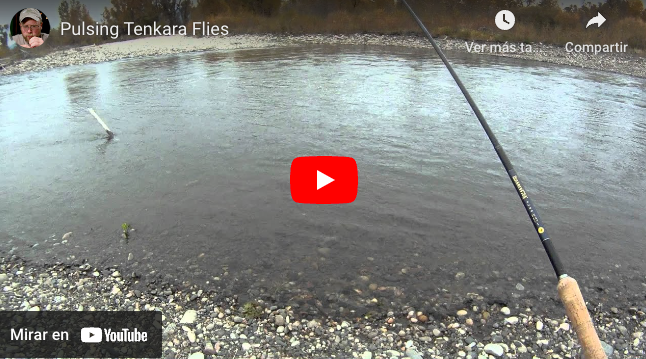by John Geer
Pulsing flies has become one of my favorite techniques to use with a tenkara rod, but the idea of imparting motion to flies was very strange to me after having the importance of a dead drift pounded into me for so long. Luckily, I was able to watch Daniel and Dr. Ishigaki catch many fish using this technique and made it a point to add it to my own bag of tricks. Here are some points I’ve learned that I hope will help you:
Distance – This concerns the distance of your hands and rod tip from your body. Try not to over reach or you’ll have no cushion when a fish takes the fly which can cause break offs. This is true anytime you’re fishing tenkara, but becomes more important with the aggressive takes that pulsing sometimes brings on. Don’t work the fly too close to you or you’ll find it hard to set the hook and control the fly. Find the sweet spot for the line and rod you’re fishing.
Rhythm – Trout almost always feed in a rhythm, just watch them rise sometime. Flies pulsed in a rhythmic fashion may not entice more strikes, but will lead to more solid hook ups. Slow usually works best for me, but on any given day the rhythm can change.
Angle – I usually like to cast down and slightly across when I pulse flies. Some very good anglers like to work more downstream. Casting flies upstream and pulsing them back to you can make hook sets difficult. Find your own sweet spot on angle, but remember that sometimes you’ll just have to work with what the situation offers.
Grip – A lot of the time, you’ll want to lay a small amount of your casting line on the water during the rest between pulses. You may not need to do this if you’re fishing a large and/or heavy fly, but it will help you keep from over working the standard size sakasa flies many of us fish. You’ll learn to adjust the grip you use with the rhythm and angle you’re fishing, along with the current speed.
Taking the first letter of all of these spells out DRAG, which helped me remember this while doing the video. I hope it helps you solve some problems on your next fishing trip, and I hope that trip comes soon.
[Daniel’s notes: the concept of pulsing or manipulating tenkara flies is very simple, yet the tips above will help you improve hook-up rates. The main “mistakes” I see when teaching folks how to pulse their tenkara flies are that they just erratically move their tenkara rod with no rhythm, and as a result miss a lot of fish. Also, fishing too close or too far from their bodies, which translates into lack of control. John did a terrific job at summarizing them in the video and points above].
